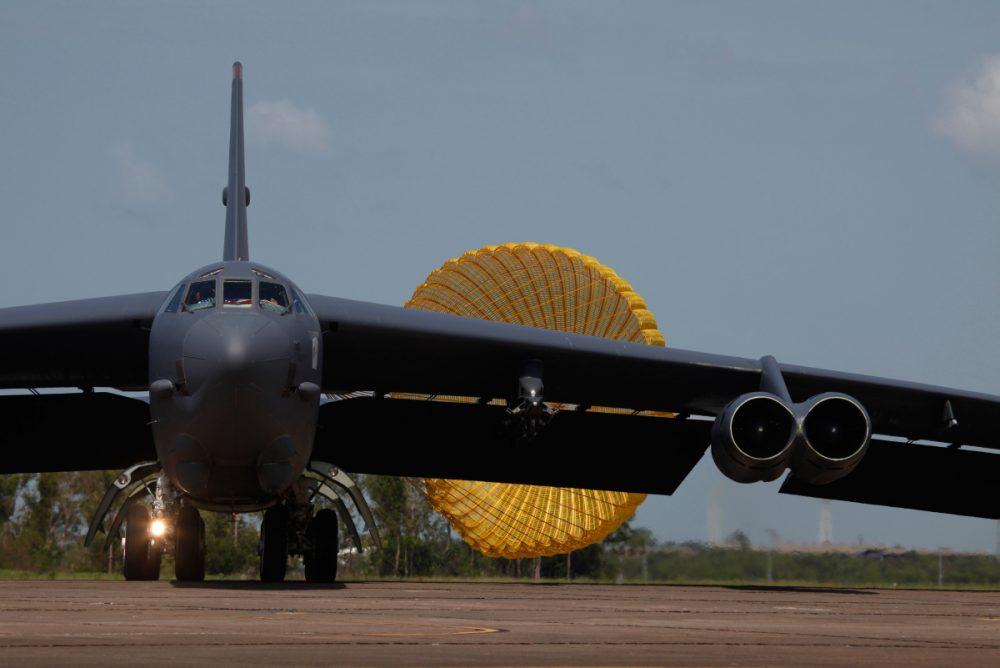Nuclear deterrence and the US–Australia alliance
Posted By Stephan Fruehling, Andrew O'Neil and David Santoro on November 15, 2019 @ 06:00

Speaking at the Hudson Institute in Washington two weeks ago, Defence Minister Linda Reynolds affirmed [1] Australia’s readiness to play a more active role in supporting US deterrence in the Indo-Pacific. Her remarks come at a time when the United States is demanding more burden-sharing from its allies, fiscally and strategically. Although Australia has so far escaped President Donald Trump’s fixation on other allies’ low defence spending, the Morrison government is acutely aware of the need to step up, and to do so publicly.
But what does supporting US deterrence entail in practice? Deterrence rests on the credible threat that the US is able and willing to use conventional and, ultimately, nuclear weapons to prevent a conflict with China and, if that fails, to manage its escalation. Australia shares these objectives, but to contribute to deterrence in the alliance raises difficult questions for both the US and Australia, and for their relationship as allies.
The scope for cooperation between Australia and the US in deterring great-power conflict in Asia is greater than it has been in decades. Canberra and Washington share a view of China as the main regional threat, and have agreed to jointly examine how long-range US air and naval operations from Australia could support common allied interests in the Indo-Pacific.
Both countries have been content so far with the low profile of nuclear weapons in the alliance. Yet in its 2018 nuclear posture review, the US articulated in greater depth the relevance of nuclear weapons for managing great-power competition. There’s a growing realisation among Australia’s strategic community that nuclear deterrence will become more relevant for Australian defence policy, and that increased allied contributions are required if the US is to play the long-term stabilising role that Australia wants.
Still, allied agreement on the need for deterrence doesn’t erase different perspectives on the relative costs and benefits this would entail. To date, the ‘joint facilities’ are the only area relating to nuclear weapons where US and Australian assessments of these costs and benefits overlap sufficiently to enable practical cooperation. Neither Australia nor the US is so far seeking deployment of US nuclear weapons to Australia, but this doesn’t mean that the current, limited role of nuclear weapons in the alliance exhausts the potential for further cooperation.
In the next AUSMIN summit communiqué, Australia and the US should start to regularly affirm the value and role of nuclear deterrence for strategic stability. Negotiating common formulations will help Canberra and Washington engage on underlying policy assumptions and frame discussions during crises. Talking about nuclear weapons demonstrates that both allies are considering the demands from great-power conflict at the most senior levels of government. Not doing so cedes the field to the advocates of the nuclear weapon ban treaty and unilateral disarmament that would undermine the alliance and regional stability.
Australia and the US should have a frank discussion on the role of arms control in international security. The Trump administration’s cavalier attitude to arms control is not what allies want to see from a reliable ally, and serious discussion of a future nuclear arms control agreement should provide a basis for useful strategic dialogue with Beijing.
Australia and the US should use a mix of official, think-tank and academic dialogues to draw out the views of Indonesia and other Southeast Asian countries on a more explicit posture of regional deterrence, including the role of nuclear weapons in international stability. How Indonesia reacts to competing narratives of strategic stability from the ANZUS allies and from Beijing is crucial not just for Australia, but also for the US to nest its regional deterrence in a narrative for Indo-Pacific stability.
Finally, Australia and the US should explore practical cooperation in conventional long-range strike operations to signal the possibility that Australia may consider increased cooperation, including in relation to nuclear forces, should China significantly raise its threat to regional stability. Australian F-35 joint strike fighters could, for example, provide suppression of enemy air defences for US long-range bombers in exercises; and Australia could support long-range targeting capabilities to enable US strike operations, including by new US intermediate-range cruise and ballistic missiles.
Neither Australia nor the US has any interest in deploying US nuclear weapons in Australia. But we cannot assume this will pertain into the future. Whether we like it or not, deterrence will be central to the strategic shape of things to come in the Indo-Pacific, and it is time for Australia to step up.
Article printed from The Strategist: https://aspistrategist.ru
URL to article: /nuclear-deterrence-and-the-us-australia-alliance/
URLs in this post:
[1] affirmed: https://www.minister.defence.gov.au/minister/lreynolds/transcripts/keynote-address-hudson-institute-washington-dc
Click here to print.